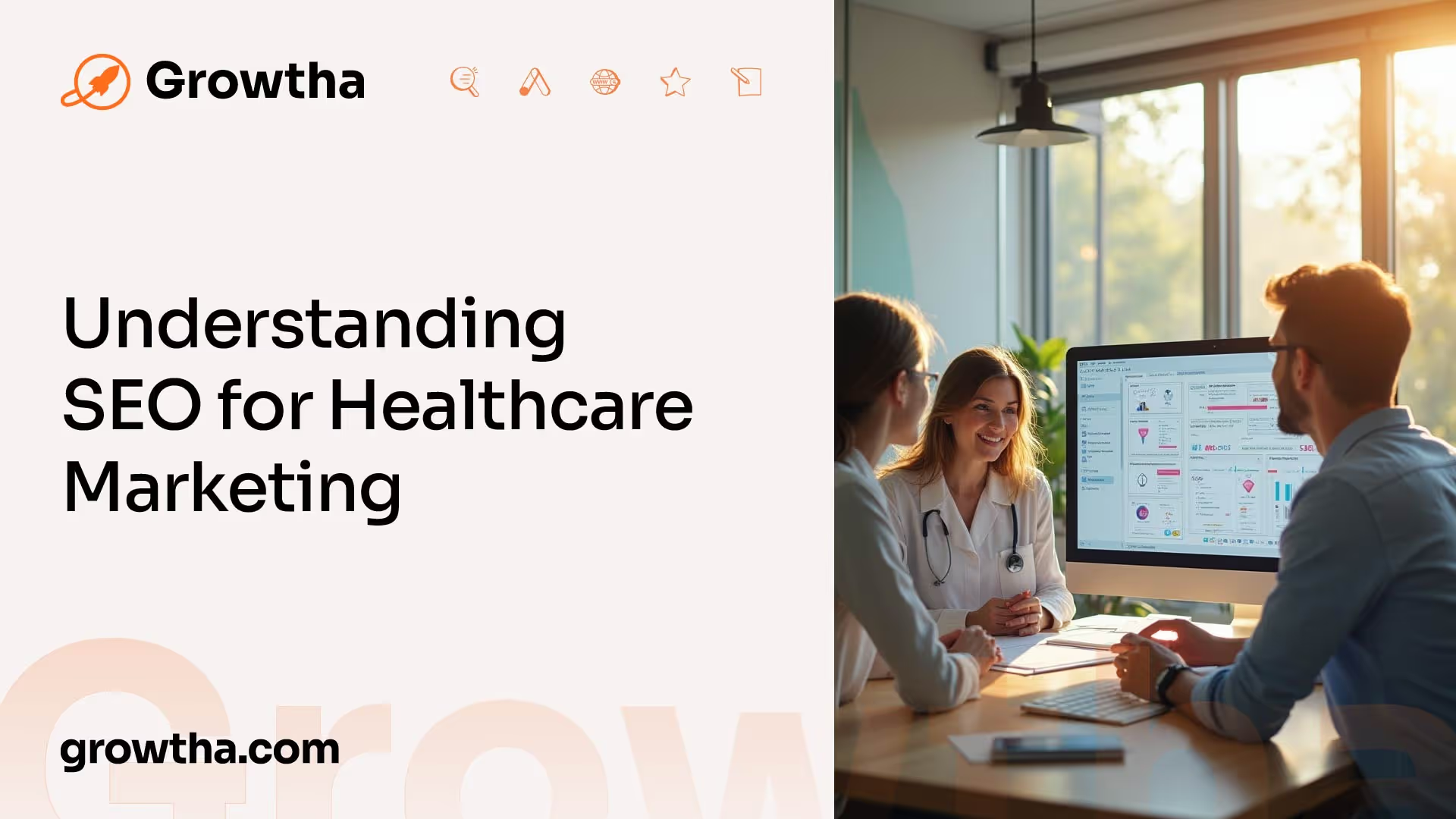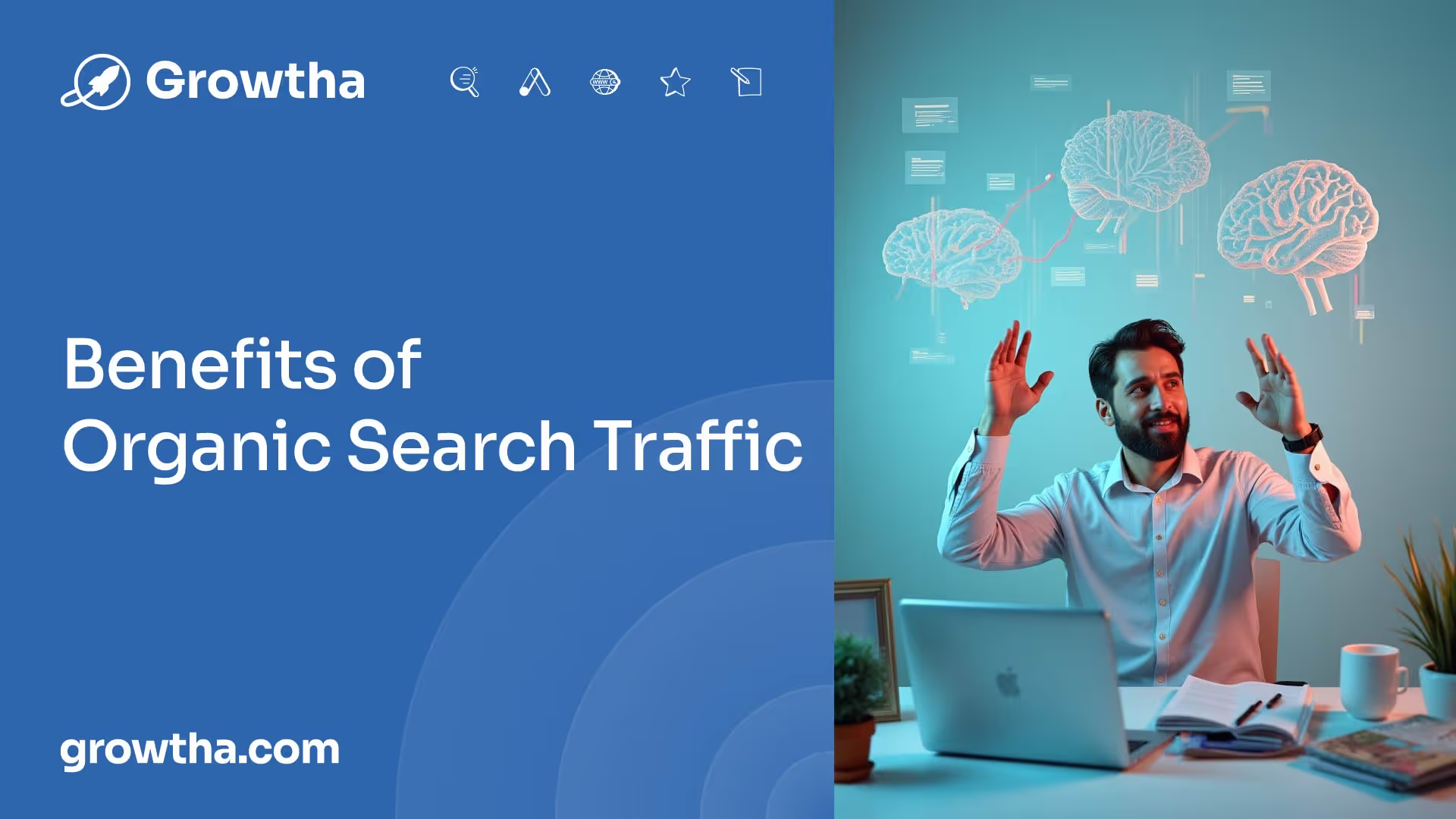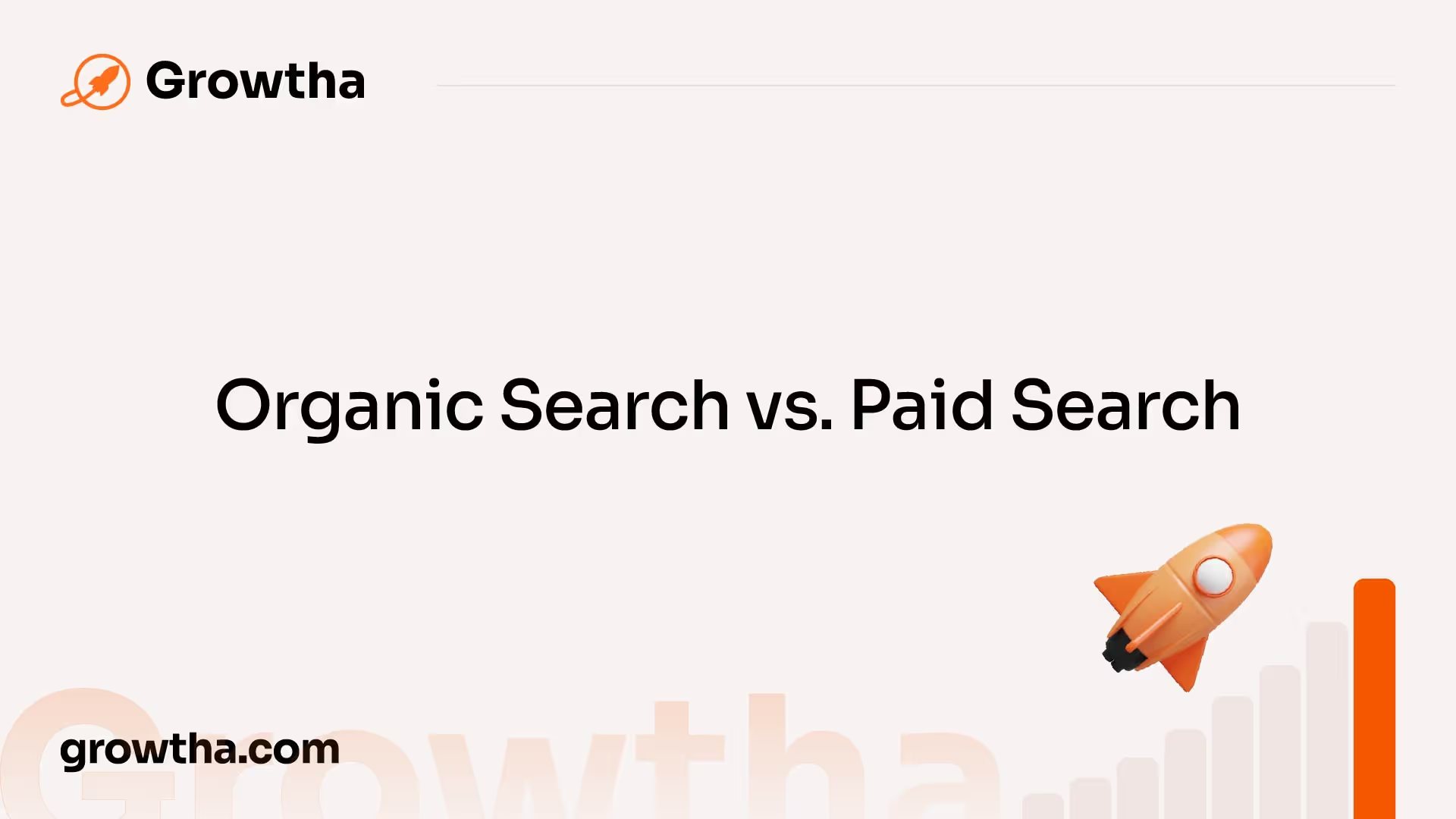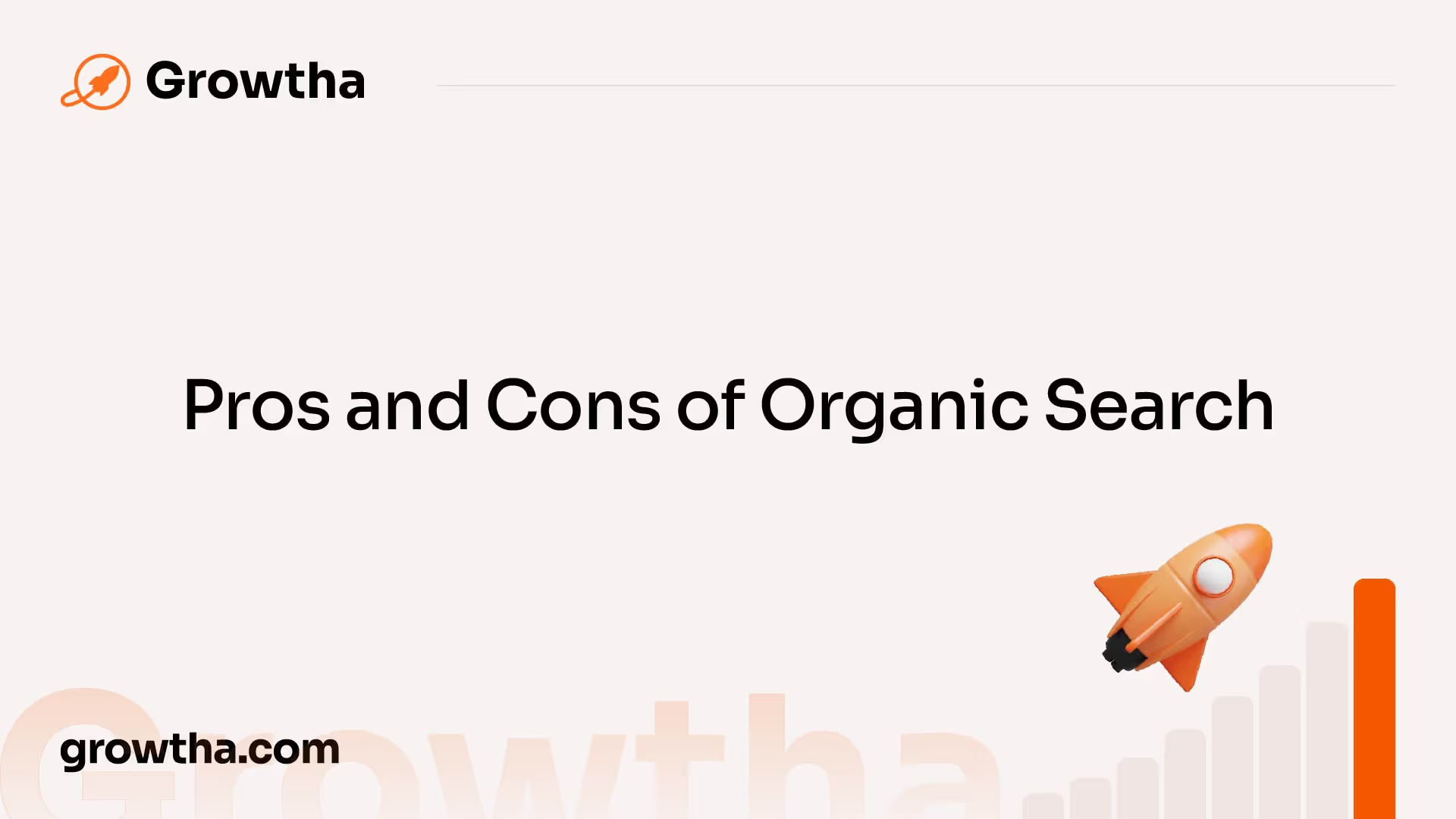What is Organic Search in SEO?
SEO is the process of optimizing your website to improve its visibility and ranking in search engine results.


What is Organic Search in SEO?
Understanding SEO for Healthcare Marketing

In the world of healthcare marketing, having a strong online presence is essential. This is where Search Engine Optimization (SEO) comes into play. SEO is the process of optimizing your website to improve its visibility and ranking in search engine results. In this section, we will explore the importance of SEO in healthcare marketing and the difference between organic search and paid search.
Importance of SEO in Healthcare Marketing
SEO plays a crucial role in healthcare marketing by helping healthcare providers and organizations increase their online visibility, attract more visitors, and ultimately convert them into patients or customers. With the majority of individuals turning to search engines for healthcare information, having a well-optimized website can significantly impact your online presence and reputation.
By implementing effective SEO strategies, healthcare websites can appear higher in organic search results, making it easier for potential patients to find the information they need. This can lead to increased website traffic, brand recognition, and ultimately, more conversions. Moreover, organic search traffic generated through SEO is often more cost-effective compared to paid click ads, making it a valuable long-term investment for healthcare organizations.
Difference Between Organic Search and Paid Search
When it comes to search engine results, there are two main types: organic search and paid search. Understanding the difference between these two is crucial for healthcare marketers.
Organic search refers to the unpaid sections in the search engine results page (SERP). These results are determined based on the relevance of the website's content to the user's search query, rather than through paid advertising. Websites that appear in the organic search results have achieved their position through effective SEO strategies. Organic search traffic is highly valuable as it drives free, targeted traffic to a website, making it a cost-effective way to attract potential patients [2].
On the other hand, paid search, also known as pay-per-click (PPC) advertising, works on a model where website owners pay a fee to have their site displayed in a prominent position on the SERP. These paid search results are usually displayed at the top of the search results or in sidebars, and they are labeled as ads. Paid search is a form of contextual advertising, where the website owner pays for each click their ad receives. While paid search can provide immediate visibility and traffic, it requires ongoing investment to maintain the ads' presence [3].
Understanding the distinction between organic search and paid search is crucial for healthcare marketers when developing their SEO strategies. While paid search can provide immediate visibility, organic search focuses on long-term visibility, credibility, and cost-effectiveness. By investing in SEO and optimizing their websites for organic search, healthcare organizations can improve their online visibility and attract targeted traffic, resulting in greater success in the digital landscape.
Benefits of Organic Search Traffic

Organic search traffic plays a pivotal role in the success of healthcare marketing strategies. Understanding the value and advantages of organic search results is essential for maximizing online visibility and driving targeted traffic to healthcare websites.
Value of Organic Search Traffic
Organic search traffic refers to visitors who find a website through unpaid search engine results. This type of traffic is often considered the most cost-effective way of driving high-quality, targeted traffic to a website. Unlike paid traffic generated through click ads, organic search traffic is free and can provide long-term results for healthcare marketing efforts.
Organic search traffic is highly valuable because it represents individuals actively searching for healthcare information, services, or solutions. These visitors are more likely to have a genuine interest in the content or services offered by healthcare websites. By appearing in organic search results, healthcare websites have the opportunity to attract relevant and engaged users, increasing the chances of conversions and driving a positive return on investment.
Advantages of Organic Search Results
Organic search results refer to the unpaid sections of the search engine results page that are determined based on the content's relevance to the keyword query. Unlike paid search results obtained through search engine marketing, organic search results do not require ongoing monetary investment. The main investment is the time and effort put into optimizing a website's content and implementing effective SEO strategies.
The advantages of organic search results are manifold. First and foremost, organic search results have greater credibility and trust among users. When a website appears organically in search results, users perceive it as more reliable and authoritative. This trust factor can significantly impact user engagement, brand perception, and the likelihood of conversions.
Additionally, organic search results provide long-term benefits for healthcare websites. Once a website achieves a high organic ranking, it has the potential to sustain that position over time, driving consistent traffic and establishing a strong online presence. This long-term visibility helps healthcare organizations build brand awareness and attract a steady stream of qualified leads.
By focusing on organic search traffic and optimizing their online presence, healthcare marketers can tap into a targeted and relevant source of traffic. Organic search traffic offers numerous benefits, including increased visibility, higher conversions, and a better return on investment. It is an indispensable component of an effective healthcare marketing strategy, driving sustainable growth and success in the digital landscape.
Organic Search vs. Paid Search

When it comes to search engine optimization (SEO) for healthcare marketing, understanding the differences between organic search and paid search is essential. Both methods play a crucial role in driving traffic to your website and increasing visibility in search engine results. Let's explore the key differences as well as the pros and cons of each approach.
Key Differences Between Organic and Paid Search
The main difference between organic search and paid search lies in the pricing models. Paid search, as the name suggests, involves advertisers paying to serve ads to target audiences. On the other hand, organic search is unpaid and relies on optimizing your website to rank higher in search engine results naturally.
Another important distinction is the speed at which results can be achieved. Paid search campaigns can go live within 15 minutes to half an hour, allowing for immediate visibility and potential traffic. In contrast, organic search can take longer, often requiring two weeks to a couple of months to rank organically. This difference in speed should be considered when planning your healthcare marketing strategy.
The positioning of search results is another aspect that sets organic and paid search apart. Paid search results are typically positioned at the top of the search engine results page, with some ads appearing at the bottom. In contrast, organic search results are displayed in the middle of the page and may be less visually prominent, especially on smaller mobile screens. This positioning can impact click-through rates and the visibility of your healthcare website.
Pros and Cons of Organic Search

Organic search offers several advantages for healthcare marketing. Firstly, organic search traffic is highly valuable as it is driven by users actively searching for specific information or solutions. This targeted traffic can lead to higher-quality leads and conversions.
Additionally, organic search results tend to have longer headlines and body copy compared to the character-limited ads in paid search. This allows for more detailed messaging and the opportunity to convey your healthcare marketing message effectively.
However, organic search also has its challenges. Achieving higher organic rankings requires consistent effort in optimizing your website's content, technical aspects, and overall user experience. It can take time to see significant results, and the competition for top organic rankings in the healthcare industry can be fierce.
Pros and Cons of Paid Search
Paid search, on the other hand, offers its own set of advantages. With paid search, you can quickly gain visibility and attract targeted traffic to your healthcare website. The ability to launch campaigns swiftly allows for immediate exposure and potential conversions.
Paid search also provides more control over the messaging, as the character limits in ads necessitate concise and focused content. This can be advantageous for delivering impactful messages and capturing the attention of users.
However, paid search comes with its own challenges. The cost of running paid search campaigns can add up, especially in competitive healthcare markets. Advertisers need to carefully manage their budgets and optimize their campaigns to ensure a good return on investment. Furthermore, as paid ads are clearly marked, some users may prefer to skip over them in favor of organic search results, impacting the click-through rates.
Understanding the differences and weighing the pros and cons of organic search and paid search is crucial for developing an effective healthcare marketing strategy. By leveraging the strengths of each approach, healthcare marketers can maximize their online visibility, attract the right audience, and achieve their marketing goals.
The Power of Organic Search

Organic search plays a vital role in healthcare SEO marketing, driving free and high-quality traffic to websites. Understanding the relationship between organic search traffic, user intent, and optimization strategies is key to achieving favorable organic search rankings. Let's explore the importance of organic search traffic, how to optimize for organic search rankings, and the factors that influence organic search rankings.
Organic Search Traffic and User Intent
Organic search refers to the unpaid listings on search engine results pages (SERPs) that are generated based on factors such as relevance to the user's search query, incoming links, SEO efforts, and domain authority [2]. It is a cost-effective way to drive targeted and relevant traffic to a website [2]. Compared to paid traffic, organic traffic often has higher click-through rates (CTR), nearly ten times higher. This makes organic search traffic a valuable source for driving visitors to your site.
Understanding user intent is crucial in optimizing for organic search rankings. By thinking about how people search for products and services related to healthcare, you can create a keyword list that aligns with their search intent. Matching user intent with relevant content helps increase the chances of ranking higher in organic search results.
How to Optimize for Organic Search Rankings
To optimize for organic search rankings, consider the following strategies:
- Target Keywords That Match Intent: Identify the different types of intent behind each keyword and create content that fulfills the users' needs [5]. This approach ensures that your content aligns with what users are searching for, increasing the likelihood of ranking higher in organic search results.
- Create High-Quality Content: Producing valuable, informative, and engaging content is crucial for organic search rankings. Google rewards content virality heavily in its rankings algorithm, so focusing on creating quality content can help improve your organic search rankings [5].
- Consolidate Pages with Similar Content: To avoid duplicate content issues and increase the chances of ranking for keywords, it's important to consolidate pages on your website that have similar content. This consolidation ensures that each page has a strong chance of ranking for targeted keywords.
Factors Influencing Organic Search Rankings
Several factors influence organic search rankings. These factors include the relevance of a page's content to the search query, the number of quality backlinks, and the overall user experience on the site [6]. Optimizing your content with relevant keywords, meeting Google's algorithm requirements, and providing a positive user experience are all crucial for improving organic search rankings [7].
By understanding the power of organic search and implementing effective optimization strategies, healthcare marketers can increase their website's visibility and reach their target audience more effectively.
Keyword Research for SEO
To achieve success in SEO and improve organic search rankings, keyword research plays a vital role. Keyword research involves finding and analyzing the search terms that people enter into search engines, providing valuable insights into the queries your target audience is searching for. This information can help inform your content strategy and overall marketing approach.
Importance of Keyword Research
Keyword research helps you identify the keywords that are best to target, allowing you to optimize your content for those terms. By understanding the search terms your audience is using, you can create relevant and valuable content that aligns with their needs and interests. This, in turn, can improve your website's visibility in search engine results and drive organic traffic.
Targeting Keywords with High Relevance
When conducting keyword research, it's essential to focus on keywords that are highly relevant to your healthcare marketing objectives. Relevance is a key element that search engines like Google consider when ranking content. By targeting keywords that are directly related to your industry, services, or products, you increase the likelihood of attracting qualified traffic to your website.
Additionally, it's important to consider the authority of the keywords. Search engines tend to favor sources they deem authoritative. By targeting keywords that align with your expertise and positioning yourself as a trusted source of information, you can improve your chances of ranking higher in search results.
Tools and Techniques for Keyword Research
There are various tools and techniques available to assist with keyword research. Here are some commonly used methods:
- Google Keyword Planner: This free tool provided by Google allows you to discover new keywords, analyze search volume, and assess keyword competition. It provides valuable insights into the popularity and competitiveness of keywords.
- Google Trends: Google Trends helps you identify which terms are trending upward, giving you an indication of the topics and keywords that are currently popular. By incorporating these trending keywords into your content, you can stay relevant and capture the attention of your target audience.
- Competitor Analysis: Analyzing the keywords used by your competitors can provide valuable insights into the keywords that are driving their organic traffic. Tools like SEMrush and Ahrefs can help you identify your competitors' top-ranking keywords, allowing you to gain inspiration and identify potential gaps in your own keyword strategy.
- SERP Feature Snippets: Understanding the searcher's intent and providing concise, relevant answers can help you win placement in search engine result page (SERP) feature snippets. These snippets include image packs, paragraph snippets, list snippets, and video snippets, which Google may highlight if used correctly.
By utilizing these tools and techniques, you can conduct thorough keyword research and optimize your content for the keywords that will have the greatest impact on your healthcare marketing efforts. Remember to regularly review and update your keyword strategy to stay aligned with the ever-evolving search landscape.
Optimizing Content for Organic Rankings
To achieve higher rankings in organic search results, it is crucial to optimize your content to align with search intent, utilize primary and secondary keywords effectively, and write compelling title tags and meta descriptions.
Aligning Content with Search Intent
Understanding search intent and creating content that matches it is essential for improving organic rankings. When users search for specific queries, they have a particular intent in mind. For example, someone searching for "how to make oatmeal cookies" is likely looking for blog posts or videos that provide step-by-step instructions, rather than e-commerce pages selling cookies. By aligning your content with the search intent, you can increase its relevance and visibility in search results [8].
Using Primary and Secondary Keywords
Strategic use of primary keywords in your content is crucial for optimizing your page for search engines. These keywords should be incorporated in important elements such as headings, subheadings, and the first paragraph of your content. Secondary keywords can also be used throughout the body content to provide additional context and relevance. Conducting thorough keyword research can help identify the most relevant and high-performing keywords to target for a particular page or piece of content [8].
Writing Effective Title Tags and Meta Descriptions
Title tags and meta descriptions play an important role in search engine optimization. These elements appear in search engine result pages (SERPs) and can significantly impact click-through rates. When crafting title tags, it is essential to include the primary keyword to indicate relevance to the search query. Title tags should be concise yet descriptive, capturing the essence of the content. Meta descriptions, on the other hand, provide a brief summary of the page's content and should be compelling enough to entice users to click through to your website. Including relevant keywords in the meta description can also help improve visibility in search results [8].
By optimizing your content to align with search intent, strategically using primary and secondary keywords, and crafting effective title tags and meta descriptions, you can enhance your website's visibility in organic search results. Remember to keep your content informative, valuable, and engaging to provide the best user experience and attract organic traffic to your website.
Image Optimization for SEO
When it comes to SEO, optimizing images is an often overlooked but essential aspect of improving website performance and enhancing user experience. Image optimization involves various practices that aim to reduce file sizes, choose the right file format, and provide descriptive alt text for images. By implementing these best practices, websites can not only improve their visibility in search engine results but also enhance their overall SEO and attract more organic traffic.
Importance of Image Optimization
Image optimization plays a crucial role in improving website load times, reducing bounce rates, and enhancing user engagement. By properly compressing images without compromising quality, websites can ensure that their pages load quickly and efficiently. This is particularly important in today's fast-paced digital world, where users expect instant access to information.
Additionally, search engines take into account website performance when ranking search results. By optimizing images and reducing file sizes, websites can improve their chances of ranking higher in search engine results pages (SERPs). This can lead to increased visibility and organic traffic to the website.
Best Practices for Image SEO
To optimize images for SEO, it's important to follow these best practices:
- Choose the right file format: Selecting the appropriate file format for your images can significantly impact their performance and quality. Generally, JPEG is suitable for photographs and complex images, while PNG is more suitable for images with transparency or simple graphics.
- Compress images: Compressing images reduces their file size without compromising their quality. This can be done using various online tools or image optimization plugins. By reducing file sizes, websites can improve their load times and provide a better user experience.
- Use descriptive file names and alt text: Giving images descriptive file names and providing alt text helps search engines understand the content of the images. It's important to use relevant keywords in the file names and alt text to improve the chances of appearing in relevant search results.
- Implement responsive design: With the increasing use of mobile devices, it's crucial to ensure that images are properly displayed across different screen sizes. Implementing responsive design ensures that images adjust and scale appropriately on various devices, providing a seamless user experience.
By following these image optimization best practices, websites can improve their overall SEO performance, attract more organic traffic, and enhance user experience. Remember to regularly review and update images as needed to ensure they continue to align with your website's content and SEO goals.
*Note: The extra context provided insights and recommendations from various sources, including SEMrush, Search Engine Journal.
Navigating Search Engine Algorithm Changes
Search engine algorithms play a crucial role in determining the visibility and rankings of websites in organic search results. Search engines like Google, Bing, and Yahoo frequently update their algorithms to enhance search results, which can have a significant impact on SEO performance [6].
Impact of Algorithm Updates on SEO
Algorithm updates can have both positive and negative effects on a website's SEO performance. While some updates may improve a website's visibility and rankings, others may result in a drop in rankings or even penalties. It is essential for website owners and SEO practitioners to stay informed about these algorithm changes and adapt their strategies accordingly.
Search engine algorithms consider various factors to determine website rankings on search results pages. These factors may include the relevance of a page's content to the search query, the number of quality backlinks pointing to the site, and the overall user experience provided by the website [6].
Staying Updated and Adapting SEO Strategies
To navigate search engine algorithm changes effectively, it is crucial to stay updated with the latest developments in the SEO industry. This can be done by following reputable sources and staying informed about any announcements or insights shared by search engine companies themselves.
Adapting SEO strategies based on algorithm changes is key to maintaining a strong SEO presence. When algorithm updates occur, it is important to analyze the impact on website rankings and take appropriate actions. This may involve making adjustments to on-page optimization, improving website speed and user experience, enhancing content quality, or reassessing the backlink profile.
Following SEO best practices, creating high-quality, user-friendly content, and considering professional assistance from digital marketing agencies can also optimize a website's SEO performance and help navigate algorithm changes effectively. It is important to continuously monitor performance metrics, track keyword rankings, and make data-driven decisions to ensure the website remains competitive in organic search results.
By staying updated and adapting SEO strategies to align with search engine algorithm changes, websites can maintain and improve their organic search visibility, driving valuable organic traffic and maximizing their online presence.
Organic Search vs. Paid Search
Understanding the differences between organic search and paid search is crucial for healthcare marketing professionals looking to optimize their online presence. While both methods can drive traffic to a website, they differ in terms of cost, visibility, and audience targeting.
Key Differences Between Organic and Paid Search
Organic search refers to the unpaid sections of search engine results pages (SERPs) that are determined based on the relevance of the content to the keyword query [3]. On the other hand, paid search involves displaying ads in the sponsored sections of SERPs, and businesses must pay for each click on their ads.
Here are the key differences between organic and paid search:

Pros and Cons of Organic Search
Organic search offers several advantages for healthcare marketing strategies. It drives free, targeted, and relevant traffic to a website, making it a cost-effective way of attracting high-quality visitors [2]. Additionally, organic search results are perceived as being more trustworthy and credible by users, contributing to a positive brand image.
However, optimizing for organic search rankings requires time and effort. Achieving a higher organic rank involves implementing effective SEO strategies, such as keyword research, content optimization, and backlink building. The results may take longer to materialize, but the long-term sustainability and cost-effectiveness make it a valuable investment for healthcare marketers.
Pros and Cons of Paid Search
Paid search, also known as pay-per-click (PPC) advertising, has its own set of advantages and disadvantages. It allows businesses to quickly gain visibility by displaying ads in the sponsored sections of SERPs. Paid search also offers more control over targeting specific audiences, demographics, and geographic locations.
However, paid search requires ongoing investment, as businesses must pay for each click on their ads. This can become costly, especially for competitive keywords. Additionally, paid search results are labeled as ads, which some users may perceive as less trustworthy compared to organic search results.
Understanding the pros and cons of both organic and paid search can help healthcare marketers make informed decisions about their digital marketing strategies. While paid search can provide quick results and increased visibility, organic search offers long-term sustainability, cost-effectiveness, and targeted traffic. Striking the right balance between the two can lead to a comprehensive and successful healthcare marketing campaign.
References
[1]: https://www.walkersands.com/article/benefits-of-organic-search-traffic/
[2]: https://surferseo.com/blog/organic-search-results/
[3]: https://www.geeksforgeeks.org/difference-between-organic-search-and-paid-search/
[4]: https://digitalmarketinginstitute.com/resources/lessons/paid-searchpaid-vs-organic-searchrygd
[5]: https://www.invoca.com/blog/improve-organic-search-rankings-google
[6]: https://medium.com/@workbinders/the-impact-of-search-engine-algorithms-on-seo-1f1fd824ced8
[7]: https://www.techtarget.com/whatis/definition/organic-search-results







